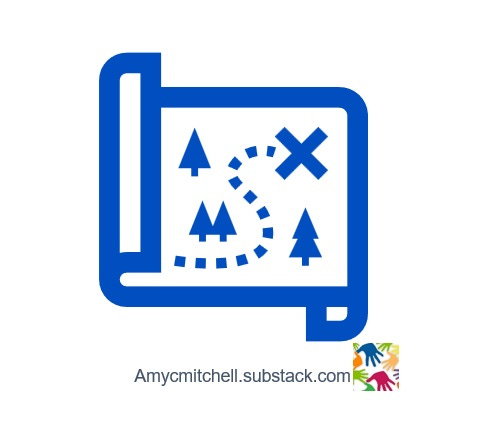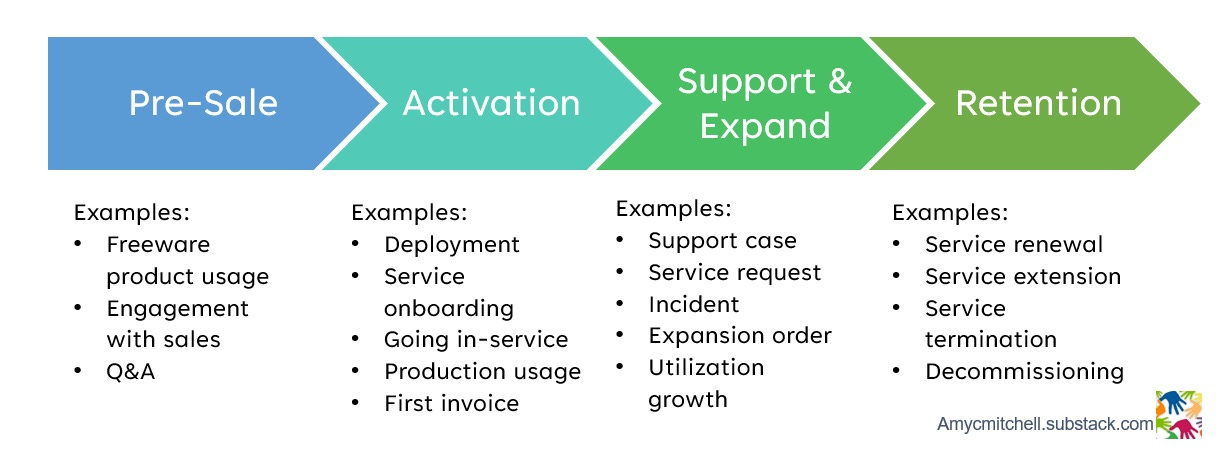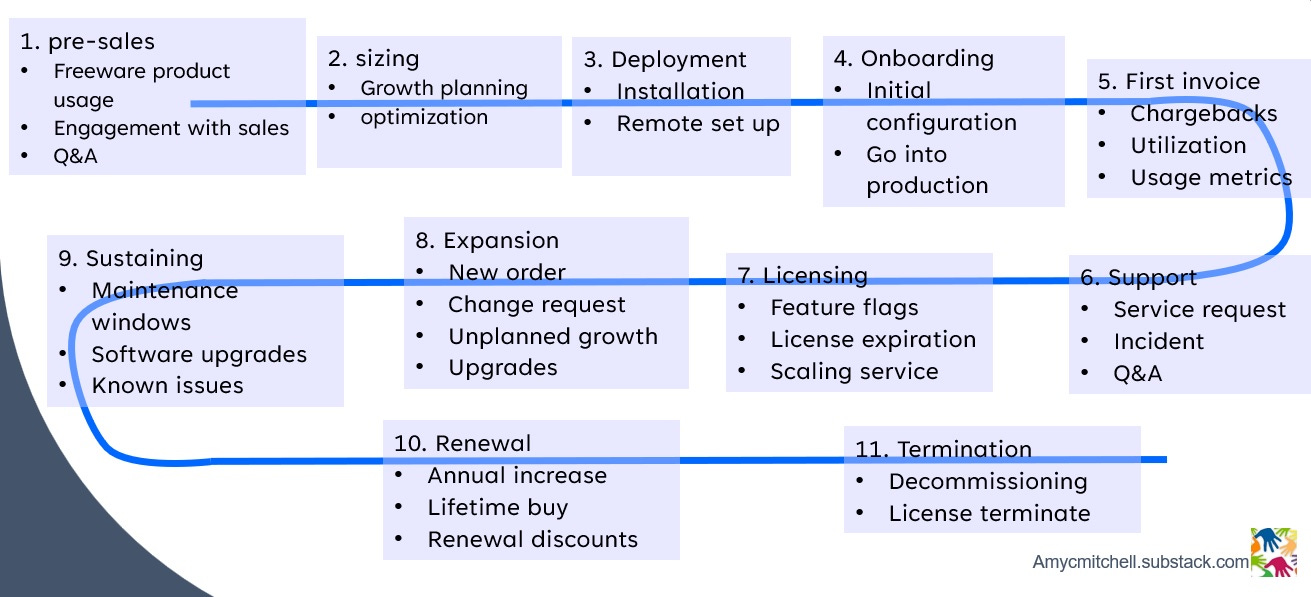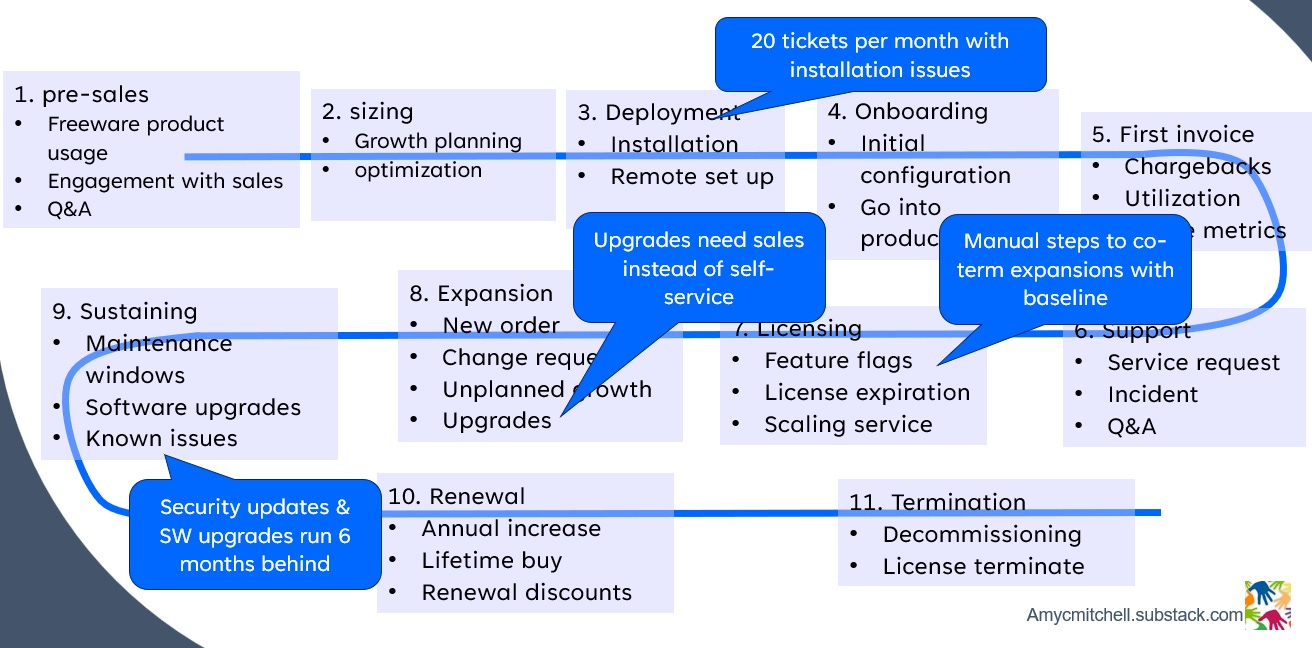Bringing Customer Insights into Your Product
Communicating about your customers' journey
You've tried many times for improvements in the customer experience of your product. Both engineering and your stakeholders are interested in revenue-generating features over addressing customer pain points in using your product. Should you drop your customer experience requirements and focus on revenue-generating features?
Customer experience issues seem like they are vital to generating revenue for you. However, to engineering and stakeholders addressing customer pain points seem like high cost and low benefit in product revenue growth. How can you communicate better about the impacts of a poor customer experience?
It is possible that your team needs a baseline of the customer experience with your product. One way to do this is with a customer journey or a visual storyline of a typical customer engagement with your product. Let's discuss how to communicate your customer journey to your product team and stakeholders.
Getting Started with a Customer Journey
To get started on your customer journey, think about the major touchpoints between your customer and your product. You might have different types of users - for example, general users and administrators. To get started, pick the major user and the happy path of the major users.
The typical touchpoints to consider are:
Pre-sale and awareness - how a potential customer learns about your product
Deciding to purchase - how customer interest turns into a purchase
Onboarding and activation of service - early product usage
Support and expansion - day-to-day product usage
Retention - renewal and termination decisions
The nice thing about these touchpoints is you can align them to business metrics. When you align to business metrics such as revenue and support costs, you can build a business case around customer experience improvements.
Types of Customer Journey - External
After you think through the key touchpoints of your customer experience, you can lay out your customer journey. It is easiest to start with a more simplified and external view of your customer journey.
The external customer journey has 5 phases at most and shows your product through your customers' eyes. An example is below with 4 phases.
This format is a great way to communicate about your customers' experience to stakeholders and provides a jumping-off point into deeper topics about improving the customer experience.
Types of Customer Journey - Internal
For communications with your product team and with technical customers, you need a more detailed view of the customer journey. There are more phases in your internal customer journey than in your external customer journey. Below is an example of a SaaS product’s customer journey.
Your internal customer journey can be even more detailed if needed. By using the S-curve you can show more phases over the customer lifecycle.
You put the external and internal customer journeys in a shared location so the whole product team can use them daily in developing the product.
Using a Customer Journey in Product Management
The are several ways to use customer journeys in product management. One of the best is in justifying customer experience improvements. The customer journey really helps teams outside of your core product team understand the impact of a poor customer experience.
Here are the steps to take in leveraging your customer journey to improve your product's customer experience:
Use your customer journey to show key metrics
Calculate the business impact of the key metrics
Show the forecast impact by fixing an aspect of the customer experience
Below is an example of the issues you've noted for the typical customer on an example SaaS product:
You list the issues and estimate the business impact:
20 tickets per month with installation issues - taking 4 hours each time to resolve
80 hours total per month of support hours
Manual effort to co-term expansions - takes 2 hours each time
10 expansions each month is 20 hours by the licensing team
Sales are required to process an upgrade to a higher tier of service - 2 hours each time
10 upgrades each month is 20 hours by the sales team
Software upgrades are a manual effort and need a scheduled maintenance window - 4 hours to work with the customer and upgrade the software
100 customers need 400 hours of support staff to schedule upgrades
You can use your typical loaded labor rates to calculate the costs of these customer experience issues. Additionally, you can calculate revenue impacts from these issues.
Then you take the final step to show the margin impacts on the forecast from these extra costs.
Conclusion - Driving Customer Experience Improvements
Preparing your customer journey is a key leadership tool in improving your customer experience. You can use your customer journey to measure the impact of a poor customer experience. There are other uses for your customer journey in communicating customer insights to your product team.
Once you generate a baseline customer journey, there are other benefits:
You can communicate changes on each product iteration
You can measure impacts at each phase of the customer journey
You can justify investment in improving the customer experience
Over time the customer journey turns into a key part of your product and is used by the whole product team.
Interesting Product Management Links
Interactive Design Do/Don’ts Examples of good and bad interactive design by @Carl Vellotti
Product Debt Types Trade-offs and ways to utilize different types of product debt: Tech Debt, Revenue Debt, Strategy Debt, Decision Debt, and Organizational Debt. @Assaph Mehr discusses when to take the debt and when to pay it off.






Great post Amy. I haven’t dealt much in this flavor of product but it’s cool to learn about some approaches.
Thank you, Amy! Interesting article, especially the part about business impact. Usually, people try to rate customer sentiment in each stage. Business impact is a new perspective.